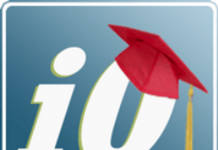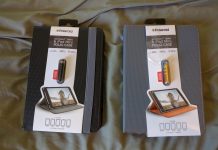 This may be cause for celebration or consternation, depending on how far you endorse the Electronic Frontier Foundation’s accusations that Google is spying on schools. Chromebooks now account for 51 percent of device shipments to the U.S. educational market, according to the #EdTech K-12 Market Report, from Futuresource Consulting, diagrammed in an infographic above. However, Futuresource adds, “Microsoft and its Windows Operating System (OS) is poised to raise its game in the fight for adoption and market share in the worldwide K-12 PC/Tablet market in 2016.”
This may be cause for celebration or consternation, depending on how far you endorse the Electronic Frontier Foundation’s accusations that Google is spying on schools. Chromebooks now account for 51 percent of device shipments to the U.S. educational market, according to the #EdTech K-12 Market Report, from Futuresource Consulting, diagrammed in an infographic above. However, Futuresource adds, “Microsoft and its Windows Operating System (OS) is poised to raise its game in the fight for adoption and market share in the worldwide K-12 PC/Tablet market in 2016.”
Chromebooks, needless to say, compete strongly on cost, but that’s not all. Futuresource cites “the simplicity for IT administrators to manage and deploy devices at scale. Users have often complained about the Windows ecosystem being too complicated.” That said, “one of the other core success factors for Chromebooks has been the attractive price points (typically $200-230) with Chromebooks effectively cornering the ‘entry level’ of the K-12 market (for non-tablet purchases).”
That said, competitors are not standing still on either front. Mike Fisher, Associate Director of Education Technology at Futuresource Consulting, notes that “Microsoft is making strong moves, developing a partnership with Lightspeed to address device manageability, whilst bringing new devices to market which are likely to compete head on with Google in the key sub $300 range.” Potentially attractive news, he adds, is that “summer buying season in 2016 could be incredibly competitive with an OS price ‘war’ taking place.”
As noted elsewhere, Chromebooks have some potentially attractive options for e-reading, although the tablet format still has obvious advantages over laptops. However, there could be relief on that score as well. “One other battle ground in 2016 is likely to be with 2 in 1 products,” notes Futuresource, predicting rising adoption in convertible tablet-plus-keyboard form factors. It’s also interesting to note that, outside the US, Microsoft holds 58 percent of the K-12 market, but Android has 34 percent, meaning that over one third of the world’s digitally enabled schoolkids are presumably learning on Android tablets. There’s quite a thought for educational e-reading pundits.

































I’m surprised no mention of Apple which had originally taken the educational market by storm. At the school system where my daughter is director of libraries and in charge of managing the electronic devices, the ipad which was originally purchased for the kids became a nightmare to manage and they have now dumped the Apple products for Chromebooks. Saved a lot of money, too. The Microsoft ecosystem was barely considered for some of the reasons cited above.